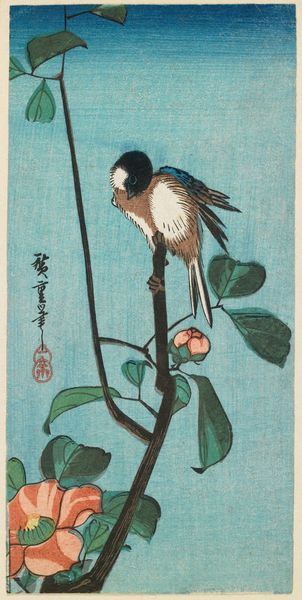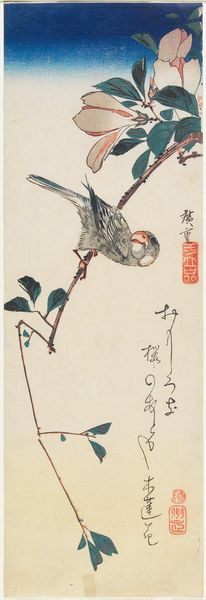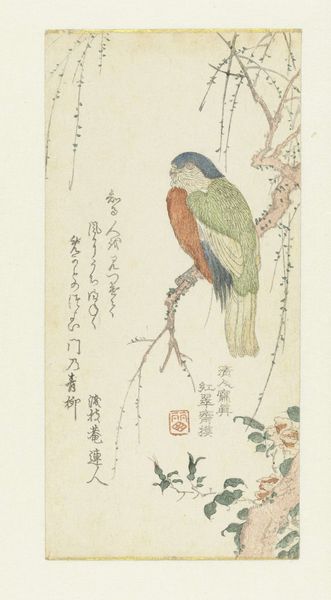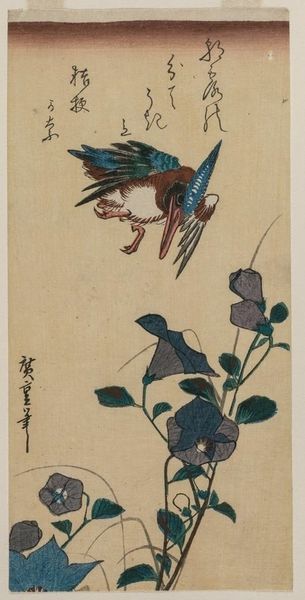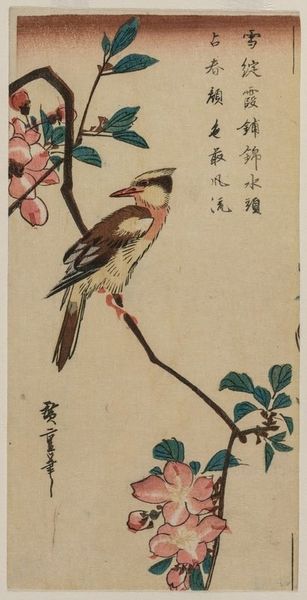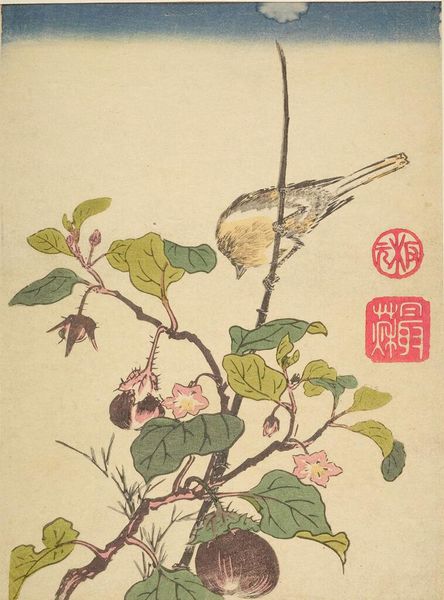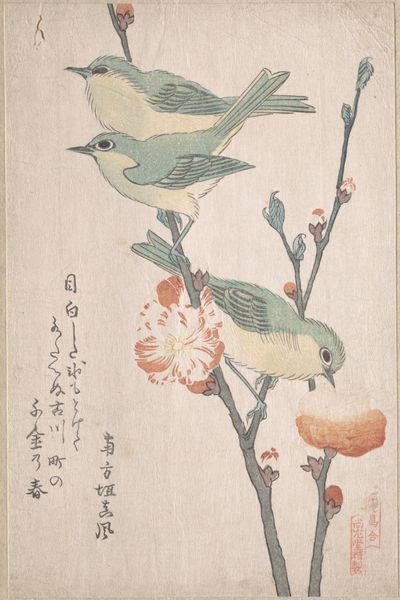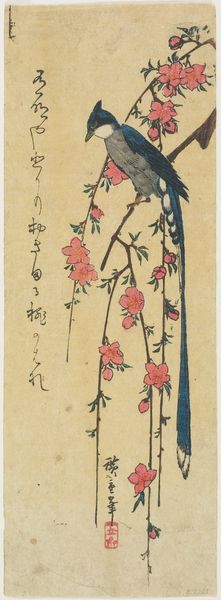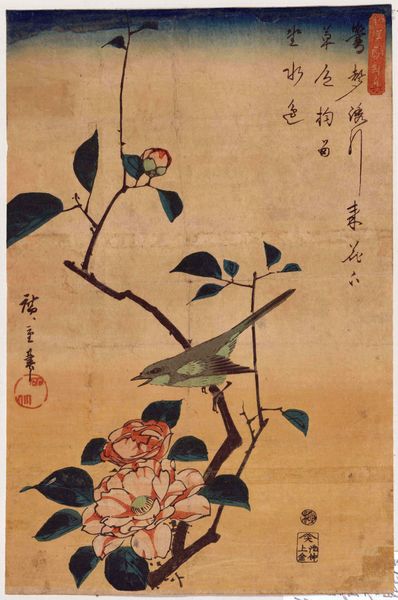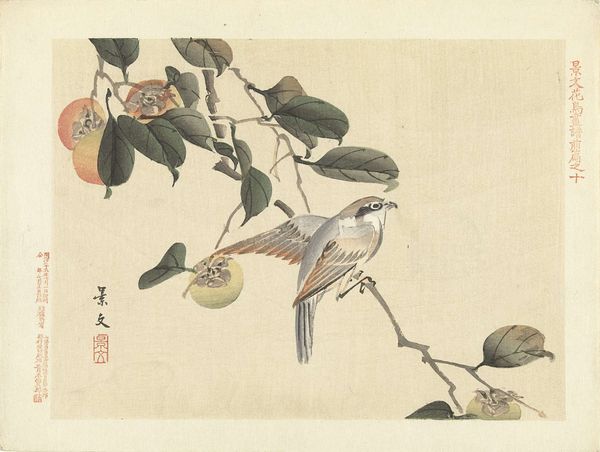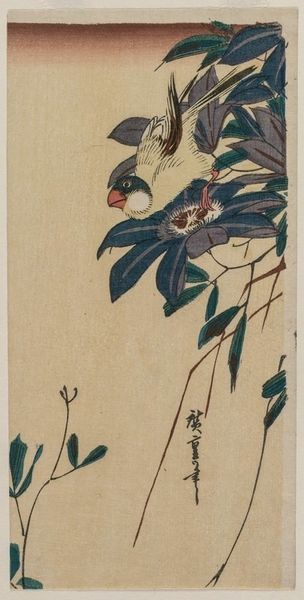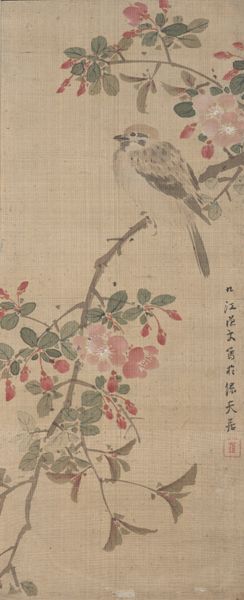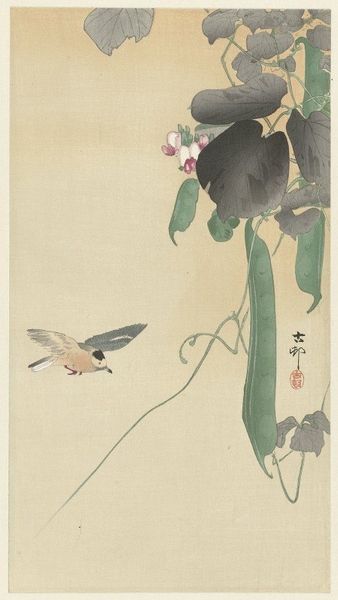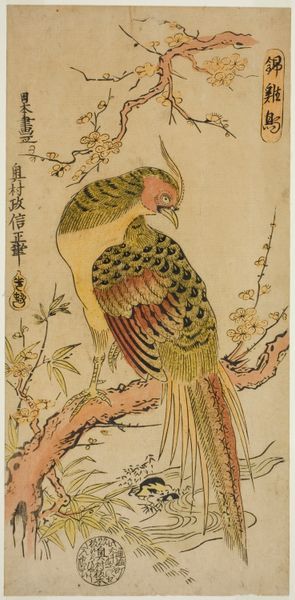
Dimensions: 10 × 4 7/8 in. (25.4 × 12.4 cm) (image, sanchōgake)
Copyright: Public Domain
Editor: So, here we have "Japanese Tit on Camellia Branch," a woodblock print by Utagawa Hiroshige, created around the 1840s. I'm immediately drawn to the delicacy of the lines and the bird's posture. It seems so… vulnerable, somehow. What do you see in this piece? Curator: Beyond its immediate charm, I see a fascinating intersection of art, nature, and societal structures. Utagawa Hiroshige lived during a period of significant social change in Japan. Consider how the role of women, often confined to domestic spheres, resonates with the delicate beauty of the natural world he depicts. The Japanese tit, perched tentatively on the camellia branch, can we interpret it as a symbol of constrained freedom? Editor: That’s a perspective I hadn’t considered. The bird does seem almost…caged by the composition, even though it's in nature. Curator: Exactly. Ukiyo-e prints like this were consumed by a wide audience, including the merchant class who were rising in prominence. How did images of beauty and nature, even those subtly hinting at social constraint, provide them with a sense of cultural belonging and even a form of quiet resistance against the established social order? And does that artistic lens perpetuate existing ideas of Japanese life? Editor: So, it’s not just a pretty picture; it’s a reflection of power dynamics and hidden tensions? Curator: Precisely. And, we should be looking to question our own Western assumptions. Instead of reading it solely through the lens of Impressionism, how can we understand the impact Ukiyo-e art had on opening channels of cultural understanding during the Edo Period, a historical movement of global impact? Editor: I’m starting to see how much more there is to this than I initially thought. Thanks, I hadn't previously looked at the complex sociohistorical meanings within these seemingly simple depictions of the natural world. Curator: These connections are subtle but powerful, and vital to examine critically. Now, when we appreciate Hiroshige’s work, we can engage in an intersectional dialogue, enhancing both our awareness and knowledge.
Comments
No comments
Be the first to comment and join the conversation on the ultimate creative platform.
